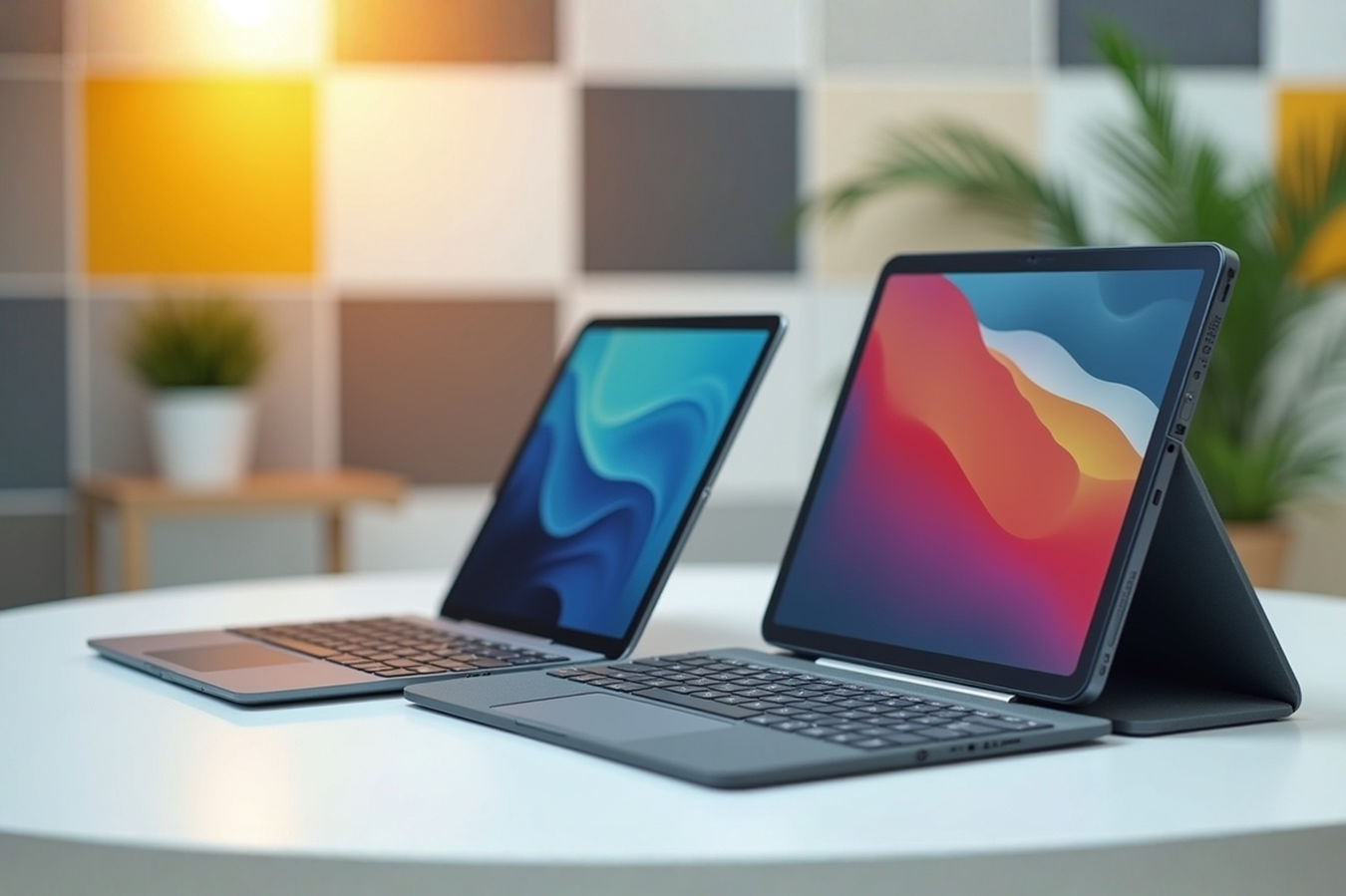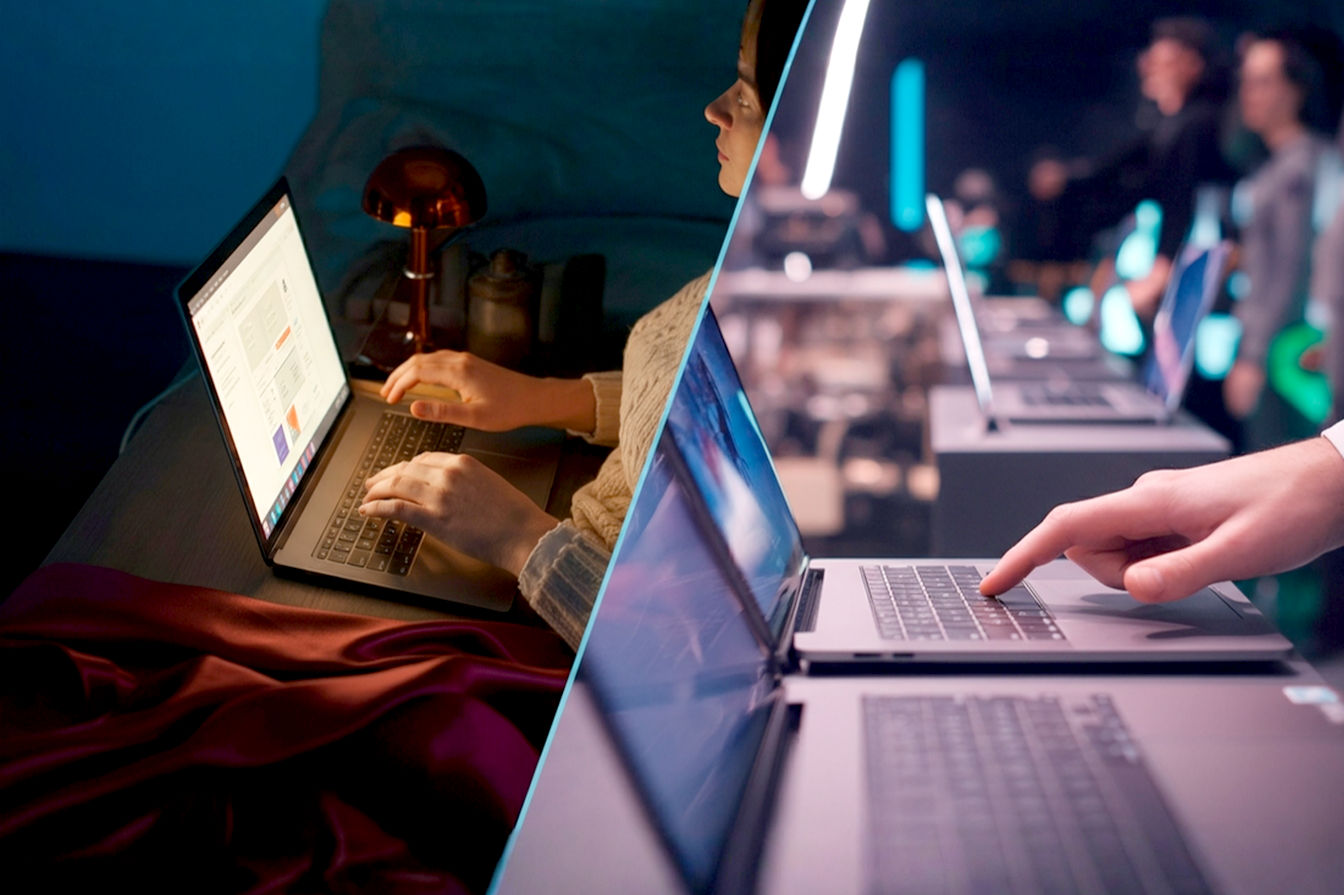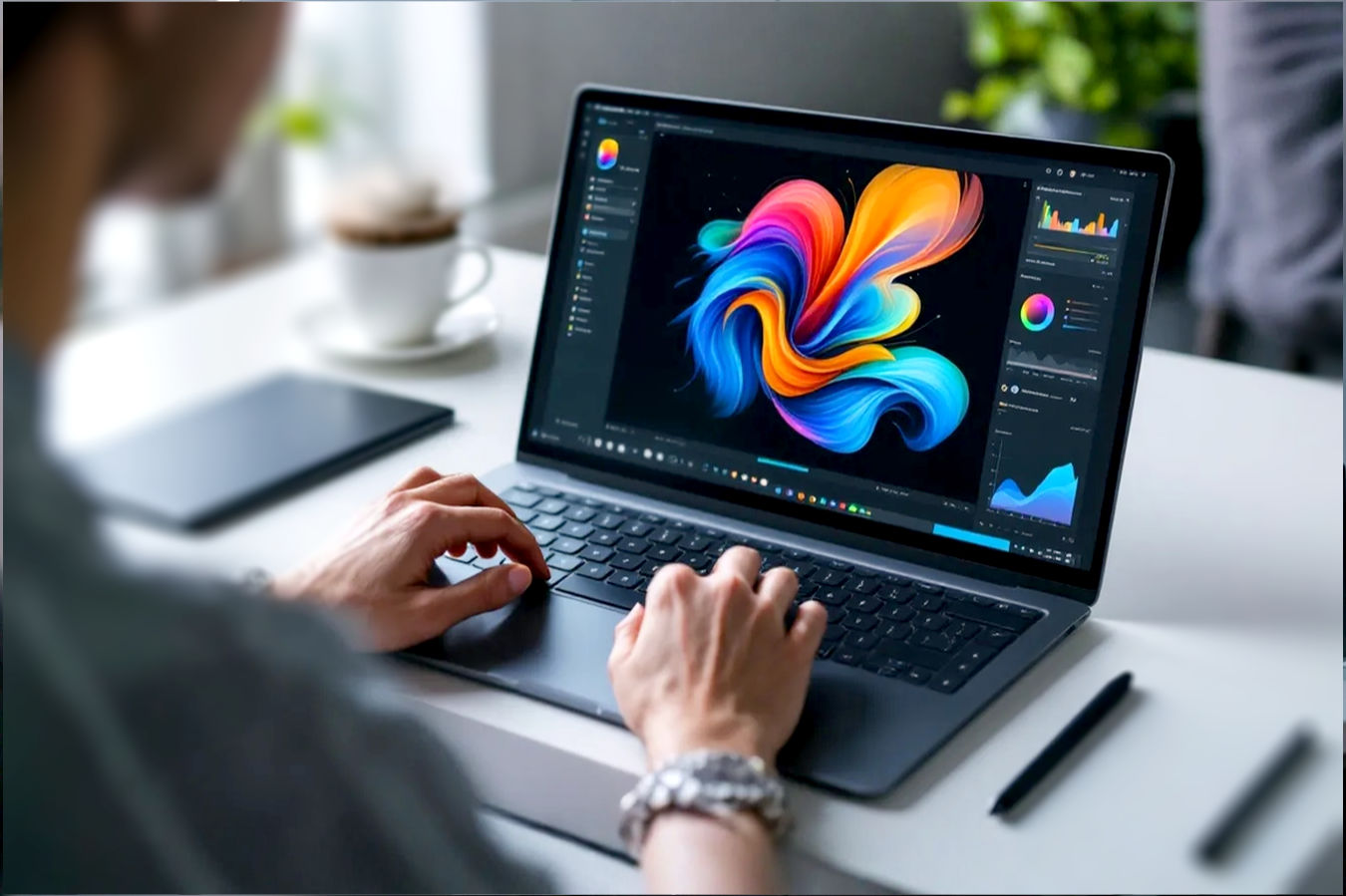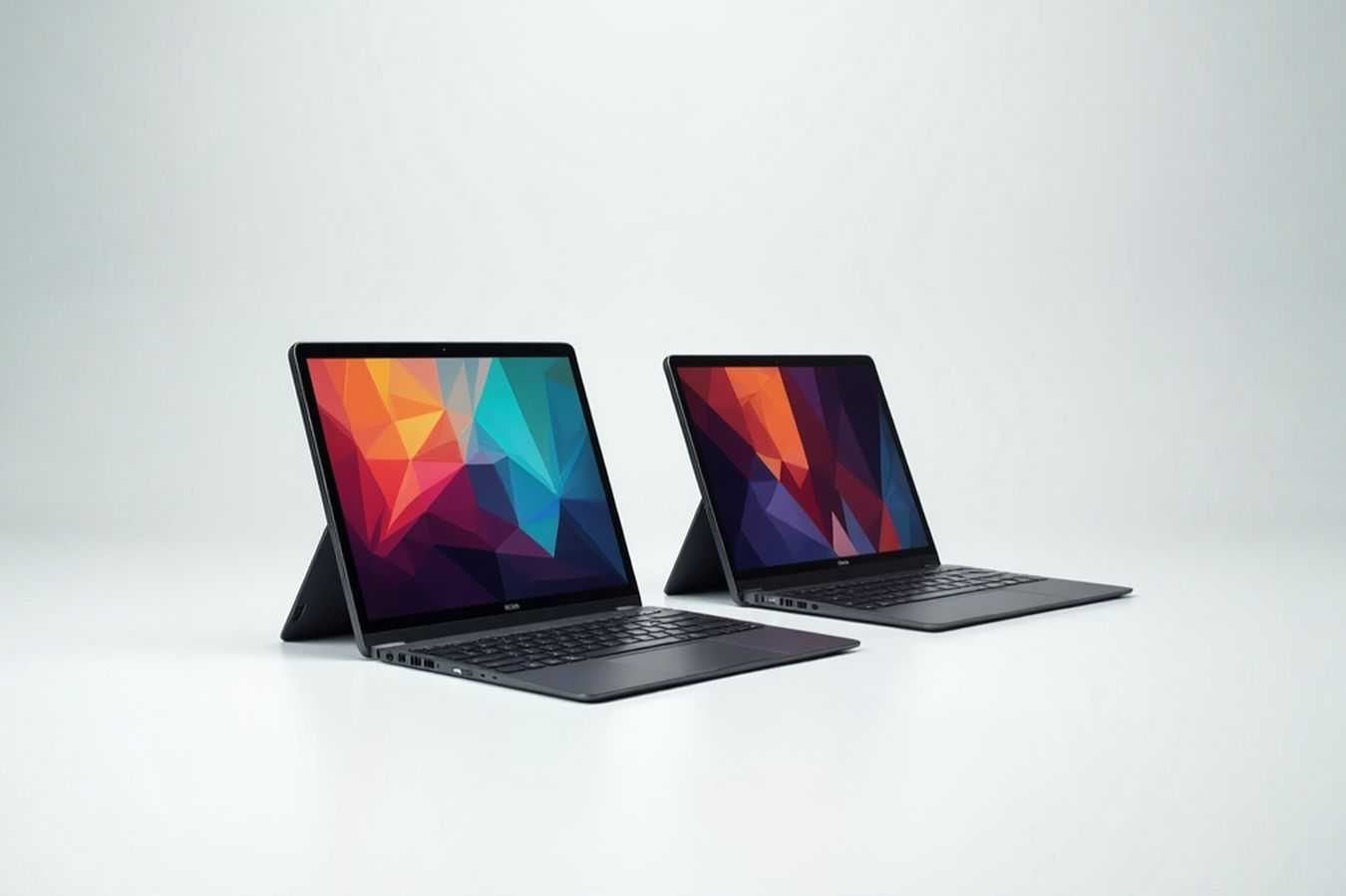This post may contain affiliate links. If you make a purchase through these links, we may earn a commission at no additional cost to you.
Have you ever wished your laptop could just… change? Maybe you need more storage one day, a different port the next, or perhaps the battery starts to die, and you just want to swap it out instead of buying a whole new machine. If that sounds familiar, the concept of a modular laptop might just be what you’ve been waiting for. It’s a fascinating idea that challenges the way we typically buy and use computers, suggesting a future where our devices are less like sealed boxes and more like customizable, long-lasting tools.
For years, laptops have been designed as increasingly integrated units. Components are soldered onto the motherboard, batteries are glued in place, and ports are fixed. This approach can make devices thinner and lighter, but it comes at a significant cost: repairability and upgradability are severely limited. When one part fails or becomes outdated, often the entire laptop is rendered obsolete, contributing to a growing problem of electronic waste.
Modular computing aims to flip this script. Instead of a single, rigid structure, a modular laptop is built from interchangeable components or “modules.” Think of it like building with high-tech LEGOs. You can theoretically swap out the processor, add more RAM, change the type of ports you have, or replace the screen, often with just a screwdriver and a little know-how. This isn’t just about fixing things; it’s about giving users unprecedented control over their device’s lifespan and capabilities.
This article will dive deep into the world of modular laptops. We’ll explore exactly what makes a laptop modular, look at the specific components that can be swapped, and discuss the compelling reasons why someone would choose this path. We’ll also tackle the technical details of how these systems work and the significant challenges they face. Finally, we’ll look at the companies leading the charge and ponder whether this approach is just a niche idea or a genuine glimpse into the future of personal computing.
What Exactly is a Modular Laptop?
At its heart, a modular laptop is a portable computer designed with components that can be easily replaced or upgraded by the end-user. Unlike traditional laptops where many key parts are permanently attached or difficult to access, modular designs use standardized connectors and accessible layouts. This makes swapping out a component as simple as unplugging the old one and plugging in the new.
Think about a desktop computer. For decades, building or upgrading a desktop PC has been a common practice. You can choose your motherboard, CPU, graphics card, RAM, storage drives, and power supply, connecting them all together. If you need more power, you swap the CPU. If you need more space, you add a new hard drive. Modular laptops bring this philosophy to the portable form factor.
In a traditional laptop, components like the CPU (Central Processing Unit) and GPU (Graphics Processing Unit) are often soldered directly onto the main circuit board, the motherboard. This means they cannot be removed or replaced. The RAM (Random Access Memory) might be accessible via a small panel, but often there are limits to how much you can add or the speed you can use. Storage might be replaceable, but sometimes even that is soldered. The battery is frequently hidden inside the chassis, requiring significant disassembly to access.
A modular laptop fundamentally changes this by making these crucial parts accessible and swappable. The goal is to allow users to extend the life of their device, adapt it to changing needs, and repair it more easily when something goes wrong. It’s a move away from the disposable electronics culture towards a model of longevity and user empowerment.
The Core Concept: Interchangeable Components
The fundamental idea behind a modular laptop is interchangeability. This means that the laptop isn’t a single, fixed entity, but rather a collection of parts designed to connect and work together seamlessly, even when those parts are swapped out for different versions.
This concept relies on several key design principles:
- Standardized Interfaces: Modular components connect using standardized ports or connectors. This is similar to how a USB drive works – any USB drive can plug into any USB port because the interface is standardized. For internal components, this might involve specific types of connectors for RAM (like SO-DIMM slots), storage (like M.2 slots), or proprietary connectors designed specifically for the modular system’s expansion cards.
- Easy Access: Modules are designed to be easily accessible. This usually means they are located under simple panels secured by screws, or in dedicated bays that allow for tool-less removal or insertion. The days of needing specialized tools or having to pry open glued-shut cases are over in a truly modular design.
- Defined Functionality: Each module performs a specific function (e.g., processing, storage, connectivity). This clear separation of roles makes it possible to upgrade or replace one function without affecting others, assuming compatibility.
- Physical Design: The physical layout of the laptop is designed to accommodate different modules. This might involve dedicated slots for expansion cards (like port modules) or standardized bays for larger components like batteries or storage drives. The internal structure is built around these modular interfaces.
Consider the example of a port module. Instead of having a fixed set of ports (like two USB-A and one HDMI), a modular laptop might have several universal bays. You could then insert modules with the specific ports you need: maybe two USB-C modules today, an HDMI module and an Ethernet module tomorrow. This level of customization is a direct result of the interchangeable component design.
This approach requires careful engineering. The base chassis needs to provide power and data pathways to all the modular slots. The operating system and firmware need to be able to recognize and work with a variety of different components that might be installed. It’s a more complex design challenge upfront compared to building a fixed system, but it offers significant benefits down the line.
Key Modular Components in Detail
What parts of a laptop can actually be made modular? While a fully modular laptop where every single component is swappable is still largely a theoretical ideal, current implementations focus on making the most commonly upgraded or replaced parts easily interchangeable. Here are some of the key components that are being designed with modularity in mind:
Central Processing Unit (CPU)
The CPU is the “brain” of the computer, performing most of the calculations. In most traditional laptops, the CPU is soldered onto the motherboard. In a modular design, the CPU would be on a separate module that plugs into a socket on the motherboard, similar to desktop CPUs.
- Simplified Explanation: You can pop out the old brain and put in a new, faster one.
- Technical Detail: This requires the motherboard to have a CPU socket (like an LGA or BGA socket, though laptop sockets are often different from desktop ones) and the CPU to be mounted on a carrier board with the appropriate connector. Thermal management is also crucial; the cooling system needs to be designed to handle potentially different power requirements of various CPU modules. This is one of the more challenging components to make modular due to power, heat, and physical size constraints in a laptop form factor.
Random Access Memory (RAM)
RAM is temporary storage the computer uses for currently running programs. Most laptops use SO-DIMM (Small Outline Dual In-line Memory Module) slots, allowing users to upgrade RAM. Modular laptops continue this, ensuring easy access to these slots.
- Simplified Explanation: You can add more temporary workspace or faster workspace for your computer programs.
- Technical Detail: SO-DIMM modules are standardized circuit boards with memory chips and a connector. Modular laptops simply ensure the SO-DIMM slots are easily accessible, typically under a panel on the bottom of the laptop or under the keyboard. The motherboard design determines the type (e.g., DDR4, DDR5) and maximum speed/capacity of RAM supported.
Storage Drives (SSD/HDD)
Storage is where your operating system, programs, and files are kept permanently. Many traditional laptops allow storage upgrades, often using M.2 or 2.5-inch SATA connectors. Modular designs prioritize easy access to these slots.
- Simplified Explanation: You can add more space for your files or switch to a faster type of storage.
- Technical Detail: Common modular storage interfaces include M.2 slots (supporting NVMe or SATA SSDs) and 2.5-inch SATA bays (for SSDs or HDDs). Modular laptops provide easy-to-open bays for these drives, often secured with a single screw. The motherboard provides the necessary data and power connections to the slot/bay.
Port Modules
This is one of the most visible and practical aspects of current modular designs. Instead of fixed ports, laptops have bays that accept different port modules.
- Simplified Explanation: You can choose exactly which plugs you want on the sides of your laptop. Need more USB-C? Swap out an HDMI module for a USB-C one.
- Technical Detail: This involves designing a universal connector within the laptop’s chassis that can carry various signals (USB data, DisplayPort video, HDMI video, Ethernet data, power). Each port module contains the necessary physical connector and the electronic components (like a USB controller chip or HDMI transmitter) to interface with the laptop’s internal bus (like PCIe or USB). The physical size and shape of the module are standardized for the specific laptop model.
Screen (Display)
While less common due to complexity, some modular concepts include swappable displays. This could allow users to upgrade resolution, refresh rate, or panel type (e.g., matte vs. glossy).
- Simplified Explanation: You could potentially upgrade to a sharper screen or one that’s better for gaming.
- Technical Detail: Swapping a display involves connecting the display panel via a video cable (like eDP – embedded DisplayPort) and potentially a touch screen cable. The physical mounting mechanism needs to be standardized, and the system’s graphics hardware must support the resolution and refresh rate of the new panel. This is complex due to the display being a large, fragile component integrated into the lid.
Battery
The battery is a component that degrades over time. In modular designs, the battery is easily accessible and replaceable.
- Simplified Explanation: When your battery stops holding a charge well, you can just swap in a new one without needing a repair shop.
- Technical Detail: Modular batteries connect via a simple power connector and often have a physical latch or screws for easy removal. The laptop’s power management system needs to be compatible with replacement batteries, and safety standards must be met for user-replaceable lithium-ion batteries.
Keyboard and Touchpad
These input devices can wear out or users might prefer different layouts or types (e.g., mechanical keyboard module).
- Simplified Explanation: If keys wear out or you want a different feel, you can change the typing area.
- Technical Detail: Keyboards and touchpads connect via flexible flat cables (FFC) to the motherboard. Modular designs would involve standardizing these connectors and creating a physical mechanism to easily detach and reattach the input module, often from the top side of the laptop chassis.
By making these key components modular, manufacturers can create laptops that are not only easier to fix but also adaptable to the user’s evolving needs over many years.
Why Choose a Modular Laptop? The Compelling Benefits
The concept of a modular laptop isn’t just a technical exercise; it offers several significant advantages for consumers, the environment, and even the tech industry itself. People are drawn to modular designs for a variety of powerful reasons.
Extending Device Lifespan Through Upgradability
One of the most compelling benefits is the ability to easily upgrade key components. In the traditional model, if your CPU or graphics card becomes too slow for new software, your only option is often to buy an entirely new laptop. With a modular design, you could potentially swap out just the CPU module for a newer, faster one, or add more RAM if applications become more memory-hungry.
- Simplified Explanation: Instead of buying a new laptop every few years, you can just update the parts that are getting old, making your laptop last much longer.
- Detailed Explanation: This upgradability directly combats planned obsolescence, the practice where products are designed to become unfashionable or non-functional after a certain period. By allowing users to refresh performance components like the CPU, RAM, and storage, a modular laptop can remain relevant and capable for many more years than a fixed-configuration device. This saves the user money over time and reduces the demand for manufacturing entirely new devices.
Easier Repairs and Reduced Downtime
When a component fails in a traditional laptop – say, a single USB port breaks – the repair process can be complicated and expensive. It might involve replacing the entire motherboard because the port is soldered on. For users or independent repair shops, this is a major hurdle.
- Simplified Explanation: If something breaks, like a port or the battery, you can often just replace that one broken part yourself instead of sending the whole laptop away or buying a new one.
- Detailed Explanation: Modular components are designed for easy removal and replacement. If a port module fails, you simply swap out that single module. If the battery health declines, you can install a new one in minutes. This empowers users to perform basic repairs themselves, saving money on labor costs and reducing the time they are without their device. It also supports the “right to repair” movement, making it easier for independent repair shops to fix devices without proprietary tools or parts.
A Step Towards Greater Sustainability
The rapid cycle of laptop replacement in the traditional model generates enormous amounts of electronic waste (e-waste). E-waste contains hazardous materials and is a significant environmental problem globally. Modular design offers a powerful way to combat this.
- Simplified Explanation: Since you can fix and upgrade your laptop instead of throwing it away, modular designs create much less electronic trash, which is better for the planet.
- Detailed Explanation: By extending the functional lifespan of a laptop from perhaps 3-5 years to potentially 7-10 years or even more, modularity drastically reduces the number of devices being discarded. When a component is upgraded, the old module can potentially be recycled more efficiently than a whole device, or even refurbished and reused in another system. This aligns with circular economy principles, aiming to keep materials and products in use for as long as possible.
Tailored Customization for Specific Needs
Traditional laptops come in fixed configurations. You might find one with the right CPU but the wrong ports, or enough RAM but not enough storage. Modular designs allow users to tailor their laptop precisely to their needs.
- Simplified Explanation: You can build your laptop exactly how you want it, choosing the right amount of storage, the types of plugs you need, and other features.
- Detailed Explanation: Need multiple HDMI ports for connecting to displays? Just add HDMI modules. Work with large files and need lots of fast storage? Install multiple high-capacity NVMe SSD modules. This level of customization is difficult or impossible with standard laptops and allows users to create a machine optimized for their specific workflow, whether that’s creative work, programming, or general productivity.
Potential for Long-Term Cost Savings
While the initial cost of a modular laptop might sometimes be comparable to or slightly higher than a traditional laptop with similar specs, the long-term cost savings can be significant.
- Simplified Explanation: Even if it costs a bit more at first, you’ll save money over the years because you won’t have to buy a whole new laptop as often, and repairs are cheaper.
- Detailed Explanation: The ability to upgrade components like RAM, storage, or even the CPU means you don’t need to purchase a brand new machine just to get a performance boost or more capacity. Replacing a single component module is significantly cheaper than buying a whole new laptop. Furthermore, easier and cheaper repairs mean avoiding costly out-of-warranty service fees or the need for premature replacement due to a minor failure. Over 5-10 years, the total cost of ownership for a modular laptop could be substantially lower.
These benefits collectively paint a picture of a more user-friendly, economically sensible, and environmentally responsible approach to personal computing. They are the driving force behind the growing interest in modular laptop designs.
How Modular Laptops Work: A Technical Look
Understanding how modular laptops function requires a peek under the hood at the technical infrastructure that supports interchangeable components. It’s not just about making parts easy to swap; it’s about designing a system where different parts can communicate and work together effectively.
The core of a modular laptop system is a base chassis or frame that houses the motherboard and provides the physical structure and connectivity points for the modules. This chassis is designed with dedicated slots or bays for each type of modular component.
The Motherboard: The Central Hub
The motherboard in a modular laptop is different from a traditional one. While it still contains core components like the chipset and potentially some integrated graphics, it features standardized sockets and connectors for the modular parts.
- Simplified Explanation: The main circuit board has special slots that different parts can plug into, kind of like a power strip for computer parts.
- Detailed Explanation: Instead of having the CPU permanently attached, the motherboard will have a CPU socket. It will have SO-DIMM slots for RAM and M.2 or SATA connectors for storage, all easily accessible. For port modules, the motherboard extends internal data buses (like PCIe, USB, DisplayPort) to standardized connectors located in the modular bays on the laptop’s sides. These connectors must be robust enough to handle repeated insertions and removals.
Inter-Module Communication
When you plug in a module, it needs to be able to communicate with the rest of the system. This happens over various internal communication pathways or buses.
- Simplified Explanation: When you plug in a new part, the laptop needs to be able to talk to it and understand what it is.
- Detailed Explanation: Port modules, for example, might connect via a high-speed bus like PCIe (PCI Express) or directly via USB lanes extended from the chipset. A storage module connects via SATA or NVMe protocols over the appropriate bus. The system’s BIOS/UEFI firmware plays a crucial role here. It must be able to detect what modules are installed during startup and configure the system accordingly. This requires the firmware to be more flexible and capable of identifying a wider range of potential hardware configurations compared to a traditional laptop’s firmware, which is designed for a fixed set of components.
Power Delivery
Each module needs power to operate. The laptop’s power delivery system must be designed to provide the correct voltage and current to each modular slot, potentially accommodating modules with different power requirements (within a defined range).
- Simplified Explanation: The laptop needs to send the right amount of electricity to each plug-in part.
- Detailed Explanation: The power management unit on the motherboard routes power from the battery or external power adapter to the various modular connectors. This involves voltage regulators and power distribution pathways designed to handle the load of different component combinations. For CPU modules, this is particularly complex as different CPUs have significantly different power draw characteristics.
Software and Driver Compatibility
For a modular system to work smoothly, the operating system and device drivers must be compatible with the various modules a user might install.
- Simplified Explanation: The computer’s software needs to understand and work with whatever parts you plug in.
- Detailed Explanation: When a new module is inserted, the operating system needs to detect the new hardware, load the appropriate device driver, and integrate it into the system. This requires close collaboration between the modular laptop manufacturer, component suppliers, and operating system developers. The manufacturer often provides a suite of drivers designed to work with all supported modules, and the system’s firmware helps the OS identify the hardware correctly.
The technical challenges in creating a robust and reliable modular laptop are significant. Ensuring compatibility across a range of potential modules, managing power and thermal loads, and developing flexible firmware and software require careful engineering and standardization efforts.
Challenges Facing Modular Laptops
Despite the compelling benefits, modular laptops face several significant hurdles that have prevented them from becoming mainstream overnight. These challenges span technical, economic, and logistical domains.
Lack of Industry Standardization
Perhaps the biggest challenge is the absence of universal standards for modular components. Unlike desktop PCs, where ATX motherboards, PCIe slots, and SATA connectors are widely adopted across manufacturers, there are no such standards for laptop modularity.
- Simplified Explanation: Different companies making modular laptops use different plugs and sizes for their parts, meaning you can’t use a part from one company’s laptop in another company’s laptop.
- Detailed Explanation: Each modular laptop manufacturer currently uses its own proprietary connectors and physical module designs. A port module designed for a Framework Laptop, for instance, will not fit or work in a Dell or HP laptop, even if those companies were to release modular models. This limits consumer choice and makes it difficult for third-party manufacturers to produce compatible modules, potentially driving up costs and limiting availability compared to standardized components. Achieving industry-wide standards would require significant collaboration and agreement among competing companies.
Size, Weight, and Design Compromises
Integrating modular connectors and providing easy access bays can sometimes result in laptops that are thicker, heavier, or have larger bezels compared to highly integrated traditional designs.
- Simplified Explanation: Making parts easy to swap can sometimes make the laptop a bit bigger or heavier than regular ones.
- Detailed Explanation: Modular connectors and the necessary internal structure to support interchangeable parts take up more physical space than soldered components. Access panels and module bays add thickness and can influence the overall form factor. While engineers are constantly working to minimize these impacts, achieving the ultra-thin and light designs of some traditional laptops can be more challenging with a modular approach. Aesthetics can also be a factor; the visible seams or module bays might not appeal to everyone.
Initial Cost Considerations
While modular laptops can offer long-term savings, their initial purchase price might be higher than a traditional laptop with similar base specifications.
- Simplified Explanation: Sometimes, buying a modular laptop costs a little more upfront than buying a regular one.
- Detailed Explanation: The research, development, and manufacturing processes for modular systems are currently more complex and potentially more expensive than for mass-produced, fixed-configuration laptops. Developing proprietary modular connectors, designing flexible motherboards, and setting up supply chains for individual modules adds costs. As modular designs become more common and manufacturing scales up, this price gap may decrease, but it can be a barrier for early adopters.
Performance and Efficiency Trade-offs
In some cases, using modular connections instead of direct, soldered connections can introduce minor performance bottlenecks or reduce power efficiency.
- Simplified Explanation: Because parts are plugged in instead of being directly connected, sometimes they might not be quite as fast or use power as efficiently as in a regular laptop.
- Detailed Explanation: Every connector adds a small amount of electrical resistance and latency. While modern connectors are designed to minimize this, a soldered connection is inherently more direct. For components like high-performance CPUs or GPUs (if they were to become modular), ensuring that the modular interface doesn’t significantly hinder performance or increase power consumption is a technical challenge. Integrated designs can sometimes optimize power delivery and signal pathways more precisely.
Availability and Longevity of Module Supply
For the modular concept to truly work long-term, users need to be confident that replacement and upgrade modules will be available years down the line.
- Simplified Explanation: You need to be sure that the company will keep making the parts you might want to upgrade to or need to fix your laptop in the future.
- Detailed Explanation: A modular laptop manufacturer needs to commit to producing and stocking compatible modules for many years after the initial laptop purchase. This requires a robust supply chain and a long-term business model that supports selling individual components. If a company discontinues a specific module or goes out of business, users could find themselves unable to upgrade or repair their device, negating a core benefit of the modular design. This is particularly a concern for smaller companies entering the modular space.
Overcoming these challenges is crucial for modular laptops to move from a niche market to a significant force in the personal computing landscape. It requires innovation, industry cooperation, and a commitment from manufacturers to the long-term vision of upgradable and repairable devices.
Current Players in the Modular Laptop Space
While the idea of modular computing has been around for a while, only recently have companies started bringing truly modular laptop products to market. The most prominent example currently is Framework.
Framework Laptops
Framework is a company founded with the explicit mission of creating long-lasting, repairable, and customizable laptops. Their approach embodies the principles of modularity.
- Simplified Explanation: Framework is a company specifically making laptops where you can easily swap out parts like ports, storage, and even the main computer board.
- Detailed Explanation: Framework’s laptops are designed from the ground up to be modular. They feature easily accessible RAM slots, M.2 slots for storage, and perhaps most notably, a system of Expansion Cards that serve as modular ports. These small modules plug into bays on the sides of the laptop, allowing users to choose exactly which ports they want (USB-C, USB-A, HDMI, DisplayPort, Ethernet, MicroSD card reader, etc.). Framework also offers replaceable components like the screen, keyboard, battery, and even the entire mainboard (which contains the CPU, GPU, and core logic). This allows users to upgrade their laptop’s core performance by simply swapping out the mainboard, while keeping the original chassis, screen, and other components. Framework sells replacement parts and upgrade modules directly to consumers and provides detailed repair guides and tools. They have also fostered an ecosystem for third-party module development.
While other companies have offered some limited upgradability (like accessible RAM or storage), Framework is currently the most prominent example of a company building a laptop system fully centered around the modular philosophy. Their success will likely influence whether larger manufacturers adopt similar strategies.
Other past attempts at modular computing, like Project Ara for smartphones (by Google), demonstrated the technical feasibility but also the significant challenges in creating a truly open and standardized modular ecosystem. The lessons learned from these projects are valuable for the future of modular laptops.
The landscape is still evolving, but companies like Framework are proving that there is a market for laptops that prioritize repairability, upgradability, and user control.
The DIY Aspect: More Assembly, Less Building
When we talk about “building your own modular laptop,” it’s important to clarify what that actually means in practice. For most users, it’s less about designing components from scratch and more about assembling and customizing a system from pre-made modular parts.
- Simplified Explanation: It’s not like building a computer chip yourself, but more like putting together a high-tech kit by choosing and plugging in different ready-made parts.
- Detailed Explanation: A company like Framework sells components like the mainboard, screen, keyboard, battery, and expansion cards separately, often in a “DIY Edition.” Users purchase these modules and assemble them into a complete laptop. This process typically involves following detailed guides to connect cables, screw in components, and insert modules into their designated slots. While it requires some technical confidence and manual dexterity, it doesn’t involve soldering, circuit design, or complex manufacturing processes. It’s akin to building a desktop PC from off-the-shelf parts, but adapted for the laptop form factor.
This assembly process is a key part of the empowerment offered by modularity. It gives users a deeper understanding of their device, makes them more comfortable with future repairs and upgrades, and reinforces the idea that the laptop is a collection of parts they own and control, not a sealed, untouchable product.
For those with more advanced skills, the modular ecosystem can also open doors to true “building.” Companies like Framework provide documentation and even CAD files for their modules, allowing enthusiasts and developers to design and create their own custom expansion cards or even 3D-print custom parts for their laptop chassis. This pushes the “DIY” aspect further, enabling innovation and personalization beyond the manufacturer’s standard offerings.
So, while most users won’t be fabricating CPUs in their garage, the term “building your own” accurately reflects the increased level of user involvement and control compared to simply buying a pre-configured laptop off the shelf.
The Future of Modular Computing: A Glimpse Ahead
Is the modular laptop just a niche product for tech enthusiasts, or does it represent a significant shift in the personal computing landscape? While challenges remain, there are strong indicators that modularity could play a much larger role in the future of laptops.
Several trends support this potential shift:
- Growing Environmental Awareness: Consumers and governments are increasingly concerned about electronic waste and the environmental impact of technology. Modular designs offer a tangible solution by promoting longevity and repairability. Regulations like the “right to repair” movement gaining traction in various regions could also mandate easier access to parts and repair information, naturally favoring modular approaches.
- Demand for Longevity and Value: In an economic climate where consumers are looking for more value from their purchases, a laptop that can be upgraded and repaired for many years is an attractive proposition. The total cost of ownership argument for modularity is powerful.
- Technological Advancements: As connectors become smaller and more efficient, and as manufacturing processes improve, the technical challenges of building thin and light modular devices are becoming more manageable. Innovations in battery technology and thermal management could also facilitate more modular designs.
- User Empowerment and Customization: The desire for personalized technology is strong. Users want devices that fit their specific needs and reflect their values (like sustainability). Modular designs directly address this by giving users control over their hardware configuration and lifespan.
- Potential for New Business Models: Modular computing opens up possibilities for companies to focus on selling components and providing long-term support, rather than solely relying on selling new devices every few years. This could foster a more sustainable and potentially more profitable ecosystem in the long run.
Imagine a future where buying a laptop is like buying a car. You choose the base model, but then you can customize it with different engine options (CPU modules), add features (port modules), and easily get it serviced or replace worn-out parts. This model aligns better with consumer expectations for durable, long-lasting goods.
However, for modularity to truly become mainstream, several things need to happen:
- Increased Manufacturer Adoption: More major laptop manufacturers need to invest in and release modular designs. This would increase competition, drive innovation, and potentially lead to greater standardization.
- Development of Industry Standards: While challenging, the creation of some level of open standards for key modular interfaces would significantly benefit consumers and third-party component manufacturers.
- Educating Consumers: The benefits of modularity need to be clearly communicated to the average consumer, highlighting the long-term value and environmental advantages.
The path to a fully modular computing future is not without obstacles, but the foundational ideas of repairability, upgradability, and sustainability are resonating strongly with consumers and policymakers. Companies like Framework are proving the viability of the concept, and as technology advances and consumer demand shifts, the modular laptop could very well evolve from a promising alternative to a dominant force in personal computing. It represents a potential future where our relationship with our technology is less about disposable consumption and more about ownership, maintenance, and long-term value.
Conclusion: A Promising Path Forward
The journey into building your own modular laptop reveals a compelling vision for the future of personal computing. It’s a departure from the sealed, disposable devices that have become common, offering instead a world of upgradability, repairability, and customization.
We’ve explored what defines a modular laptop – its design around easily interchangeable components like the CPU, RAM, storage, ports, screen, and battery. We’ve seen the powerful reasons why this approach is gaining traction: the ability to extend device lifespan, perform easier and cheaper repairs, contribute to environmental sustainability by reducing e-waste, tailor a device through customization, and realize long-term cost savings.
We also delved into the technical underpinnings, understanding how standardized interfaces, flexible motherboards, robust power delivery, and adaptable software are essential for these systems to function. And we acknowledged the significant challenges, including the crucial need for industry standardization, potential compromises in size and design, initial cost considerations, possible performance trade-offs, and ensuring the long-term availability of modules.
Companies like Framework are currently at the forefront, demonstrating that modular laptops are not just theoretical concepts but practical, desirable products available today. Their success highlights a clear demand for devices that offer greater user control and longevity.
While modular laptops may not completely replace traditional designs overnight, their benefits align perfectly with growing consumer desires for sustainable, repairable, and long-lasting technology. The “right to repair” movement and increasing environmental awareness will likely continue to drive interest and innovation in this space.
Building your own modular laptop, or more accurately, assembling and customizing one, represents a shift in our relationship with our technology. It encourages a mindset of ownership and maintenance rather than just consumption. As the technology matures, standards potentially emerge, and more manufacturers embrace the concept, the modular laptop has a strong potential to become a significant, perhaps even dominant, force in shaping the future of personal computing. It offers a promising path towards devices that are better for our wallets, better for the planet, and ultimately, better suited to our individual needs over the long haul.






